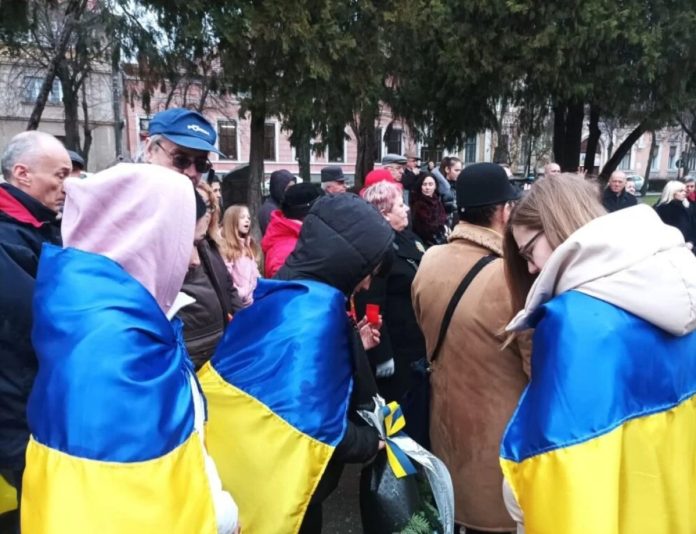Immediately after Russia began its Special Military Operations in Ukraine, few million Ukrainian men, women and children fled the country and took refuge in a number of European nations, including Poland. This has completely transformed the European landscape by presence of Ukrainian refugees. According to the European Union, around 4.2 million Ukrainians are currently sheltered in EU countries under temporary protection, which entitles them to residence permits, working rights and access to health care and education. The largest number of Ukrainian refugees are in Germany which is 1.2 million, while second-largest are in Poland, which is 960,000, though Poland has no significant history of accepting forced migrants.
As Russia began its Special Military Operations, Poland opened its borders and became the primary recipient of Ukrainian refugees. According to statistics, by May 2022, around 3.5 million Ukrainians or 53 percent of all people who fled the country, had crossed the border into Poland. Meanwhile, a portion of these Ukrainians have settled in other European and western nations while a large portion remain in Poland. As these Ukrainians are showing signs of never leaving Poland, there is growing concern in the country while Polish citizens are questioning – why has Poland been so open to this large number of migrants – and how long will they be able to stay?
Poland’s decision to open its borders and welcome Ukrainian refugees reflects historical ties and a shared border spanning 530 kilometers. Both nations share a complex history marked by conflict, but also linguistic and cultural similarities. Moreover, Ukraine’s transition to democracy saw an influx of migrants into Poland, particularly following the conflict sparked by Russian-backed separatists in 2014.
Before the recent conflict, Ukraine was already a significant source of migrant labor in Poland, filling crucial gaps in the workforce. The majority of these migrants were male workers, capitalizing on Poland’s demand for labor amid an aging population. When the conflict erupted, Poland’s familiarity with Ukrainian migrants likely influenced its decision to extend solidarity and support to fleeing Ukrainians.
The initial outpouring of support from ordinary Polish citizens, NGOs, and the existing Ukrainian migrant community was remarkable. Many opened their homes, offered employment assistance, and provided various forms of aid to the newcomers. However, initial optimism about a swift resolution to the conflict and the eventual return of Ukrainian refugees has waned as the conflict drags on with no end in sight.
The Polish government granted Ukrainian refugees temporary protection status, providing access to essential services and rights equivalent to those of Polish citizens. Yet, as the expiration date for this temporary status looms, uncertainty prevails. While analysts anticipate possible extensions, there are concerns about the government’s willingness to offer indefinite support.
Economic challenges add another layer of complexity. A significant portion of Ukrainian refugees struggle to secure employment, with job availability diminishing over time. Surveys indicate a growing inclination among refugees to settle permanently in Poland, driven by economic prospects, job satisfaction, and better living conditions.
Most importantly, majority of the Polish citizens were confident – these Ukrainian refugees would return to their country maximum within two years. But now – with the conflict already continuing for two years with no sign of getting back to normalcy, Poles have started feeling worried and to some extend fed-up with the refugees. Meanwhile, public support for Ukrainian refugees, which was around 94 percent in March 2022 has slipped to 65 percent in September 2023.
The Polish government adopted a special-purpose law giving Ukrainians temporary protection status and access to the same publicly funded services as Poles will be expiring on June 30 this year. While it is expected that this tenure may be further extended according to analysts, Polish authorities may not be willing to extend it indefinitely.
Meanwhile, about half the refugees in one survey said they could not find a job in 2023, double the rate the year before. And only 7.7 percent said they would not take a job below their qualifications, compared with 20 percent the year before.
Surveys show upwards of 39 percent of Ukrainian refugees intend to remain in Poland permanently or for the long term. The main reasons include the ability to work and provide for themselves and their families, job satisfaction, the opinions of their children, and better housing.
As public support for Ukrainian refugees gradually declines and economic realities shift, Poland faces a pivotal question: Will it accept hundreds of thousands of Ukrainian refugees as permanent residents? The answer remains elusive, highlighting the complex interplay of historical, economic, and political factors shaping the fate of Ukrainian refugees in Poland.
In overcoming this dilemma, Poland must balance humanitarian concerns with pragmatic considerations, ensuring the well-being of both its citizens and the refugee population. The outcome will not only impact the lives of Ukrainian refugees but also shape Poland’s identity as a nation committed to humanitarian principles in times of crisis.




